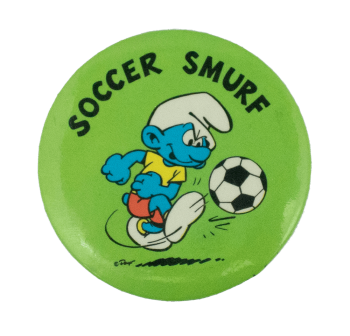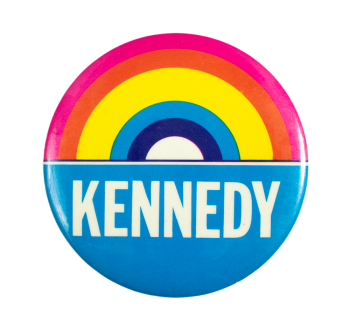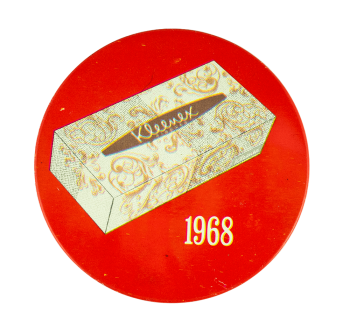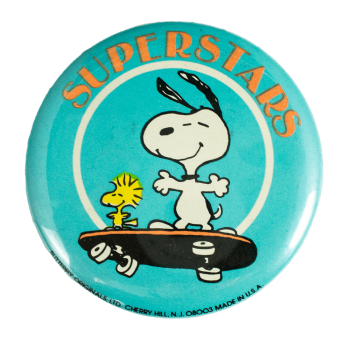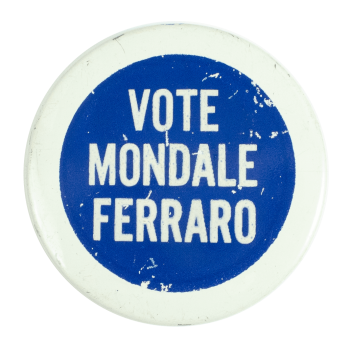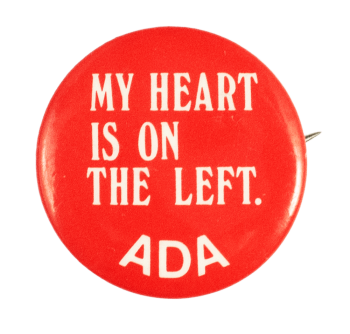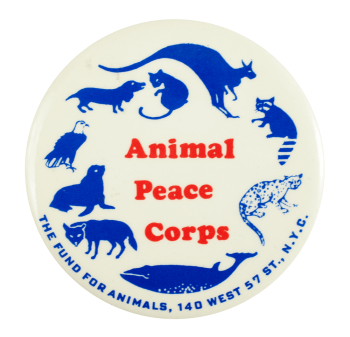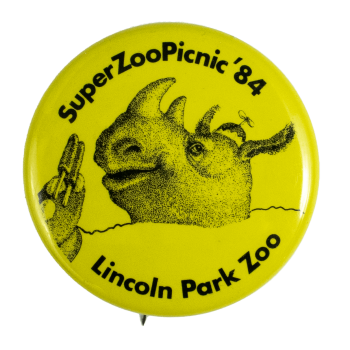Soccer Smurf
| Category | |
|---|---|
| Additional Images | |
| Sub Categories | |
| Text on Button | SOCCER SMURF |
| Image Description | Illustration of a blue-skinned character wearing a white hat kicking a soccer ball over a green background with black text. |
| Curl Text | © Peyo 1980 W. Bertie Co. S.E.P.P. Made in U.S.A. E.U.A. |
| Back Style | |
| The Shape | |
| The Size | |
| Year / Decade Made | |
| Additional Information | Smurfs are forest creatures created by Belgian writer and illustrator Pierre “Peyo” Culliford (1926-1992). They first appeared in the comic series Johan and Peewit in 1958. Their popularity quickly grew, leading to their own television series in 1959 and a Belgian animated show that aired from 1961 to 1967. The Smurfs' major breakthrough came with their introduction to the American audience through the Hanna-Barbera cartoon Smurfs, which ran from 1981 to 1990 and firmly established the lovable blue characters in American pop culture. The "history" of sports in the Smurf universe mainly originates from a special called "The Smurfs' Greatest Sports," where Smurfette hosts the first Smurfic Games. Ancient Greek traditions and feature events like the Smurf-a-thon and Smurfberry Toss inspire these games. Although characters like Soccer Smurf take part in other sports, such as soccer and "American football," in various fan-created stories, these are not part of an official Smurf sports history. Instead, they are specific events within those stories. Due to the large number of Smurf characters, the specific Smurf shown cannot be identified. |
| Sources |
Blue Buddies. (n.d.). Smurf Buttons - Tennis, Ski, Golf. Retrieved August 25, 2025, from https://bluebuddies.com/Smurfs_Smurf_Buttons-10.htm The Smurfs. (2024, September 2). In Wikipedia. Retrieved September 26, 2024, from https://en.wikipedia.org/wiki/The_Smurfs The Smurfs Official Channel. (2021, July 17). 1 Hour Olympics Special: The Smurfs' Greatest Sports Moments! The Smurfs [Video]. YouTube. https://www.youtube.com/watch?v=2zX0iDC2a2E&t=70s |
| Catalog ID | SP0195 |

